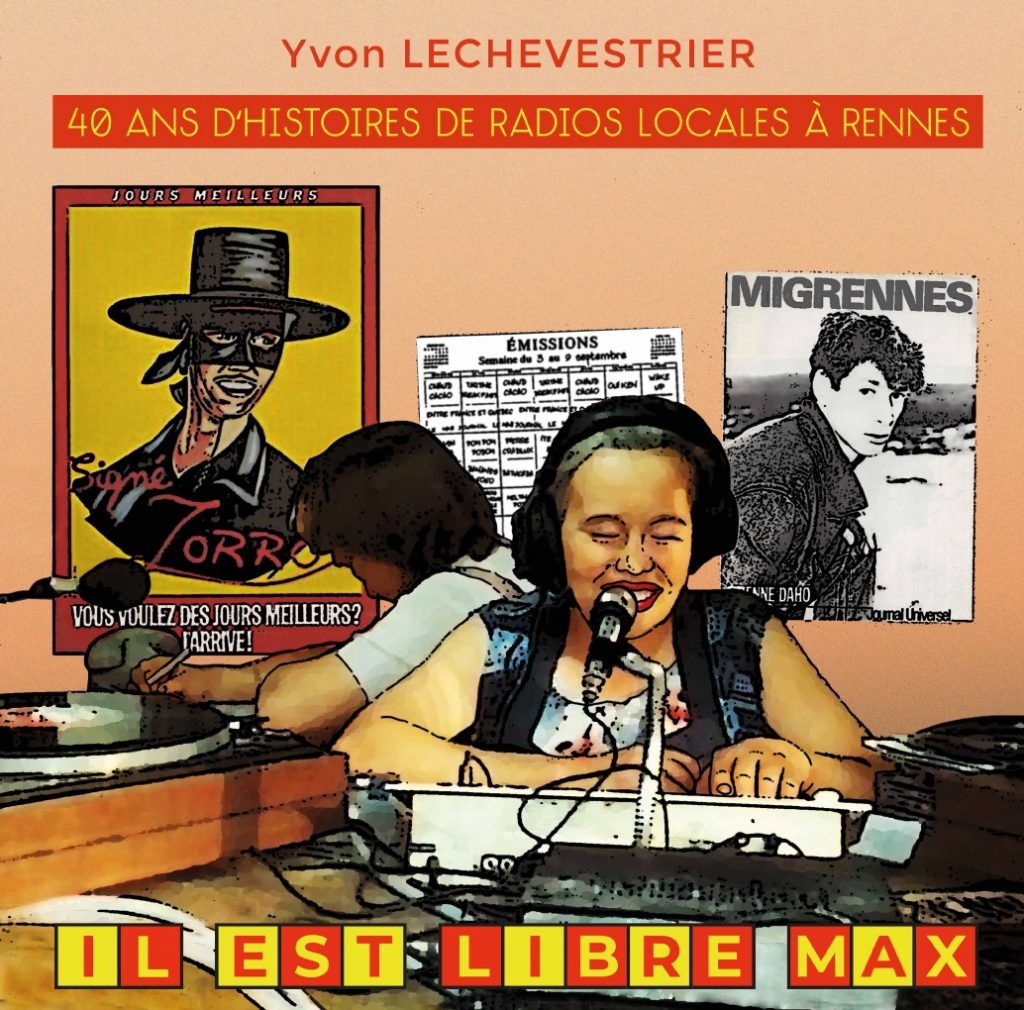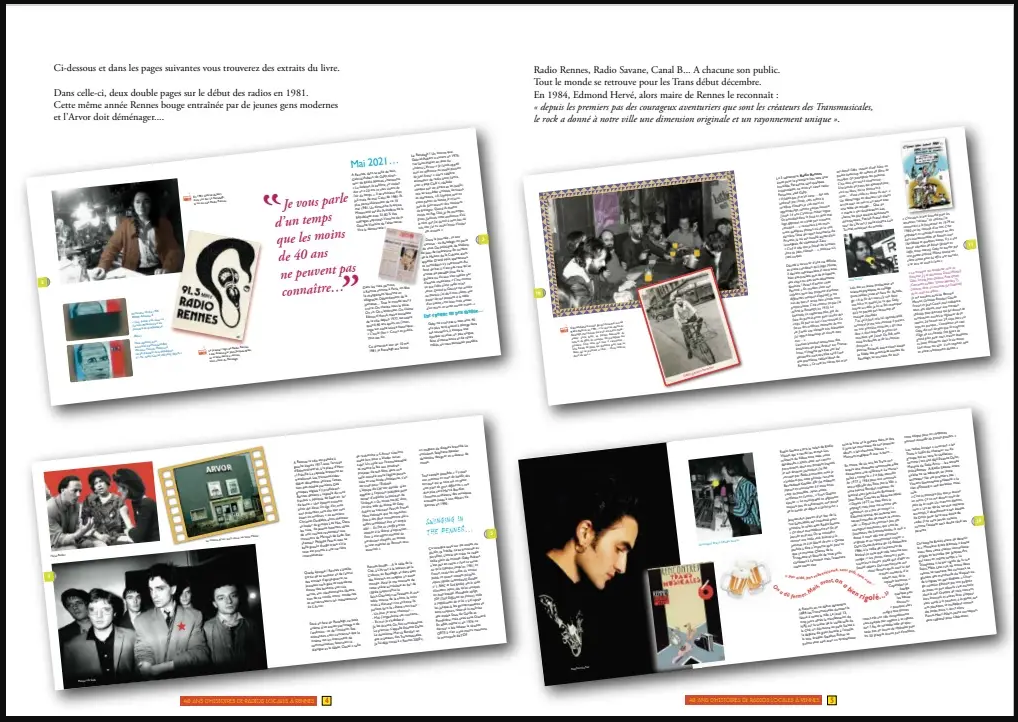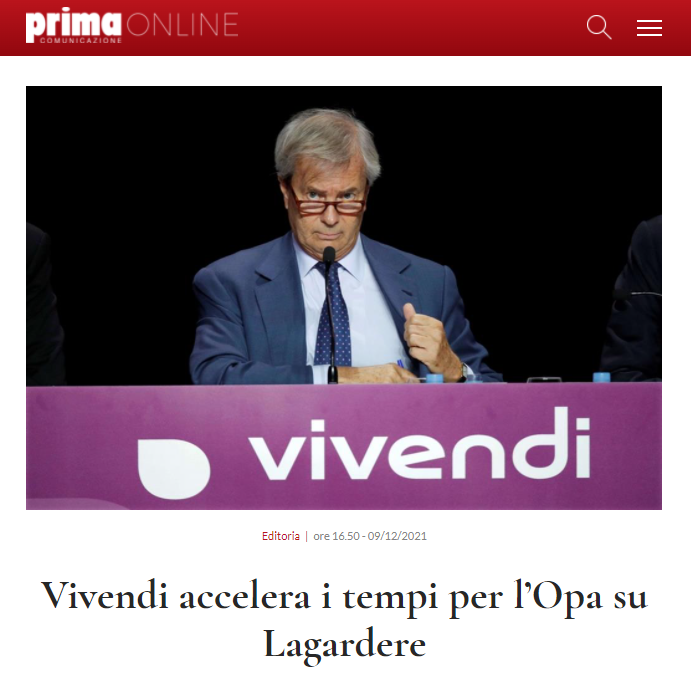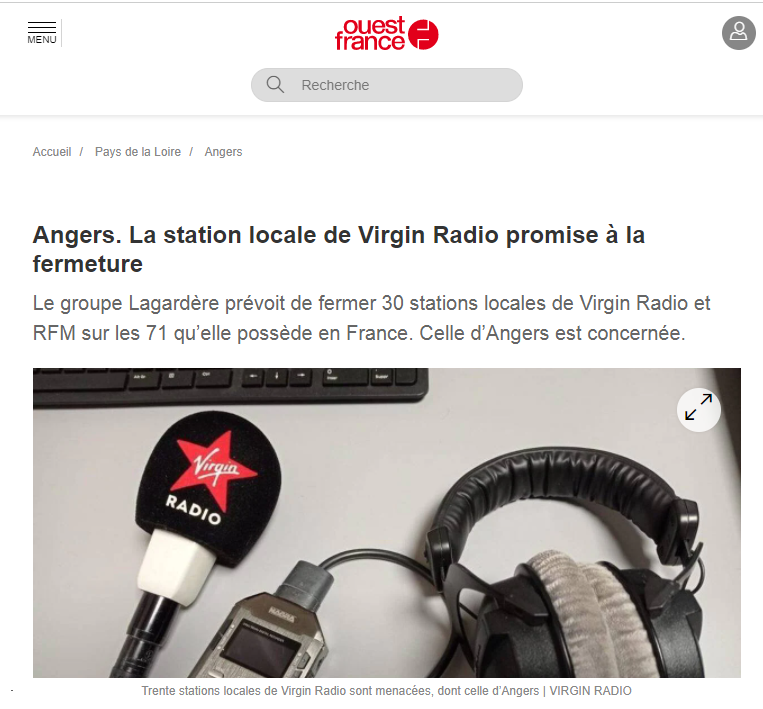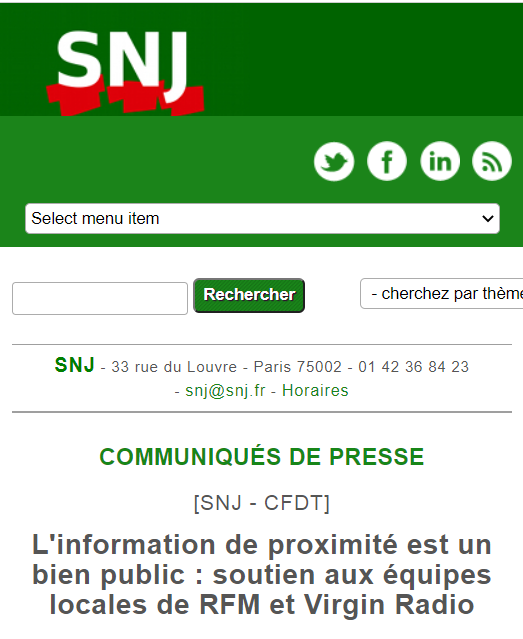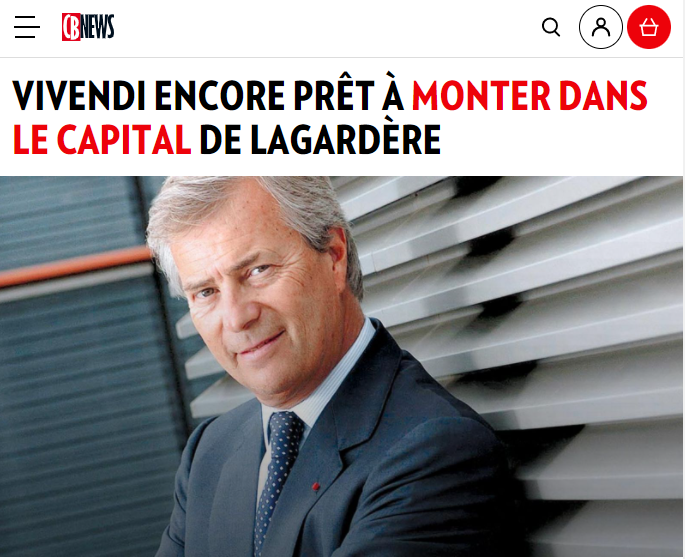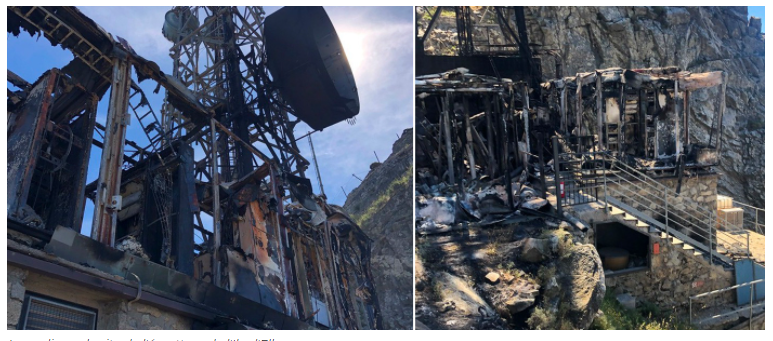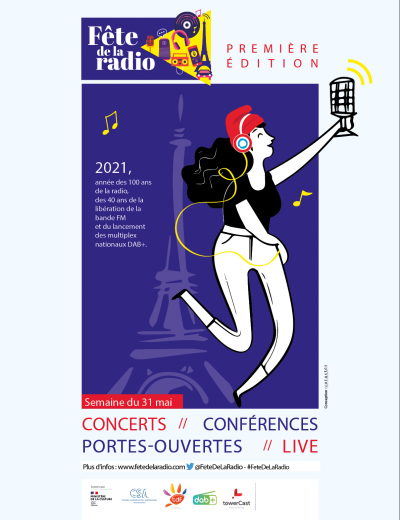ABSTRACT (IN ENGLISH)
Our journey into the world’s urban radio landscapes continues with Lyon, France’s second-largest city by population considering the metropolitan area. Frequency modulation is equally divided between local and national stations. Considering frequencies, however, the networks lead the way as they have more than twice as many (48 vs. 23) and three public networks (France Inter, France Culture, and France Musique) have as many as four channels.
Concernent la France, nous poursuivons notre voyage à travers les paysages radiophoniques du monde, afin de nous imprégner de l’esprit des stations qui peuplent les ondes des grandes métropoles

Source
Lyon a une scène radiophonique riche de stations locales, contrairement, par exemple, à Paris, où de nombreux stations à succès se sont transformées en réseaux nationaux, affaiblissant le lien avec le territoire. La FM est répartie de manière égale entre les stations locales et nationales. En ce qui concerne les fréquences, les réseaux sont en tête puisqu’ils en ont plus du double (48 contre 23) et trois réseaux publics ont quatre (France Inter, France Culture et France Musique).
Une ville snobée par les réseaux publics?
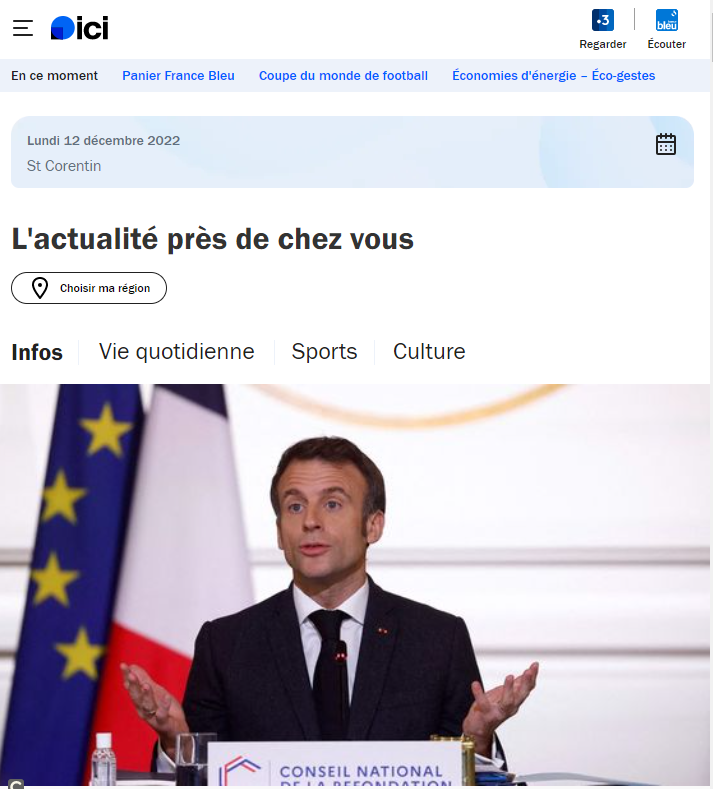
Source
Malgré l’importance de la ville, le radiodiffuseur public régional France Bleu ne dispose pas d’une station d’information locale à Lyon, malgré un réseau de 44 radios de proximité. Pourtant, l’histoire radiophonique Lyonnaise est riche : la première station a commencé à émettre le 1er avril 1925 sous le nom de Radio-Lyon, à l’initiative d’une société privée, quatre ans après celle de Paris (née le 22 décembre 1921). Ce qui est absurde, c’est queantennes locales destinées aux départements voisins, comme France Bleu Isère (sur deux fréquences) et France Bleu Pays de Savoie, sont reçues dans la ville.
La ville divisée par les stations autoroutières

Source
La situation est également curieuse en bas de la bande, sur le 107.7, la fréquence réservée aux stations autoroutières émettant en isofréquence. Il y a deux stations, qui se disputent l’audience : à l’est de la ville, c’est le programme d’Autoroute Info qui est reçu, tandis qu’à l’ouest, c’est le signal de Radio Vinci Autoroutes qui domine.
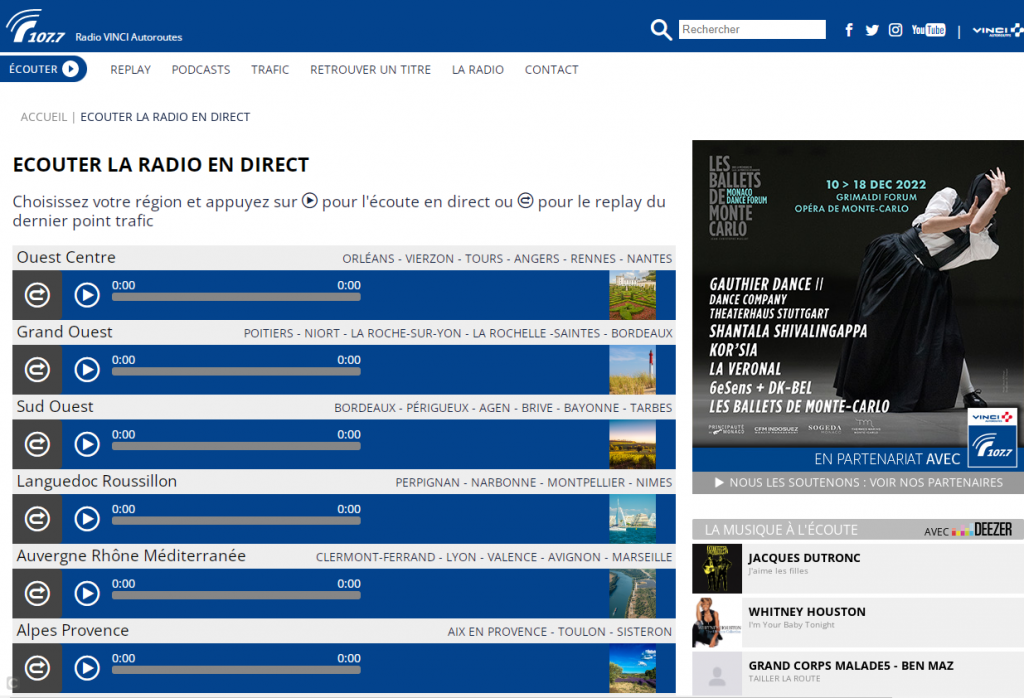
Source
Il est vrai qu’il s’agit de deux stations commerciales, donc dans ce cas l’incohérence n’est pas la faute du domaine public, mais peut-être y aurait-il eu moins de dépenses de ressources si deux stations concurrentes n’avaient pas eu à couvrir la même zone.
Voici un bref profil des radiodiffuseurs locaux
Le plus important réseau de radios communautaires
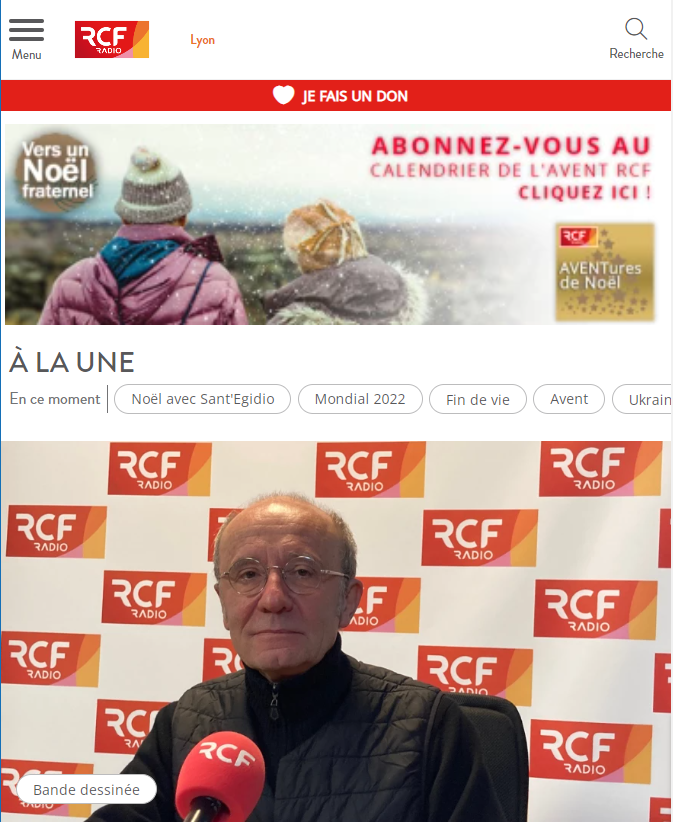
Lyon a cependant un record : la ville abrite RCF Radio Chrétienne Francophone, le premier réseau de radios communautaires de France. Fondée à Lyon en 1982 sous le nom de Radio Fourvière, elle est devenue au fil des ans un important réseau national composé de stations locales qui conservent leur autonomie. Elle compte aujourd’hui 63 radios locales, avec un total de 270 fréquences, et emploie 300 salariés et 3 000 bénévoles, dont 180 en Belgique. Les stations diffusent chaque jour quatre heures de programmes locaux : il y a des émissions religieuses mais aussi beaucoup d’émissions destinées au grand public.
Ce que l’on entend dans la ville
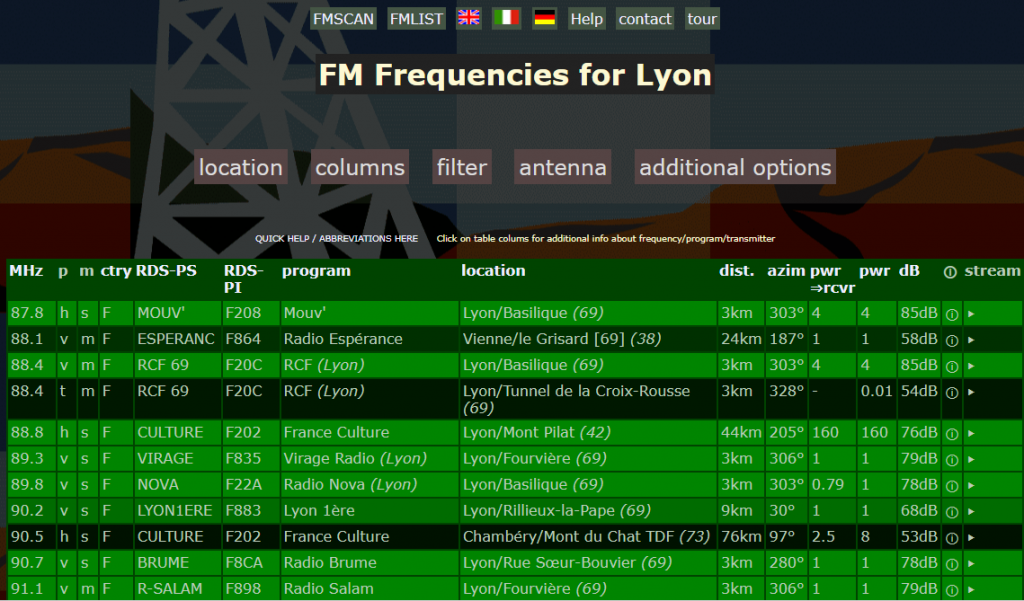
Voici un aperçu de ce que vous pouvez recevoir à Lyon. La liste est réalisée avec FMSCAN (www.fmscan.org), une application basée sur FMLIST qui permet de créer une carte des signaux de n’importe quel endroit dans le monde. Nous avons les stations qui sont reçues avec un signal d’au moins 50dB. Pour chaque station, la fréquence, le nom et l’e répét’émetteur (numéro de département entre parenthèses) sont indiqués, ainsi que le RDS.
87.8 Mouv’ Lyon/Basilique (69) MOUV’
88.1 Radio Espérance Vienne/le Grisard [69] (38) ESPERANC
88.4 RCF (Lyon) Lyon/Basilique (69) RCF 69
88.4 RCF (Lyon) Lyon/Tunnel de la Croix-Rousse (69) RCF 69
88.8 France Culture Lyon/Mont Pilat (42) CULTURE
89.3 Virage Radio (Lyon) Lyon/Fourvière (69) VIRAGE
89.8 Radio Nova (Lyon) Lyon/Basilique (69) NOVA
90.2 Lyon 1ère Lyon/Rillieux-la-Pape (69) LYON1ERE
90.5 France Culture Chambéry/Mont du Chat TDF (73) CULTURE
90.7 Radio Brume Lyon/Rue Sœur-Bouvier (69) BRUME
91.1 Radio Salam Lyon/Fourvière (69) R-SALAM
91.5 Radio Pluriel Lyon 1er (69) PLURIEL
91.7 Radio Nova Saint-Etienne/le Guizay (42) NOVA
92 Radio Scoop (Lyon) Lyon/Mont Cindre 2 (69) SCOOP
92 Radio Scoop (Lyon) Lyon/Tunnel de la Croix-Rousse (69) SCOOP
92.4 France Musique Lyon/Mont Pilat (42) MUSIQUE
92.9 Nostalgie (Lyon) Lyon/Mont Cindre 2 (69) NOSTALGI
92.9 Nostalgie (Lyon) Lyon/Tunnel de la Croix-Rousse (69) NOSTALGI
93.1 Nostalgie Saint-Etienne/le Guizay (42) NOSTALGI
93.3 Fun Radio Lyon/Fourvière (69) FUN
93.3 Fun Radio Lyon/Tunnel de la Croix-Rousse (69) FUN
93.5 France Inter Chambéry/Mont du Chat TDF (73) INTER
93.7 M Radio (Lyon) Lyon/Fourvière (69) M RADIO
94.1 France Culture Lyon/Basilique (69) CULTURE
94.2 France Culture Ancy (l’Arbresle)/Mont Arjoux (69) CULTURE
94.5 Radio Judaïca Lyon Lyon/Fourvière (69) JUDAICA
94.9 Rire et Chansons Lyon/Basilique (69) RIRE &
94.9 Rire et Chansons Lyon/Tunnel de la Croix-Rousse (69) RIRE &
95.1 Radio Classique Saint-Etienne/Croix du Guizay TDF (42) CLASSIQ
95.3 BFM Business Lyon/Mont Cindre (69) BFM
95.7 RTL 2 Lyon/Fourvière (69) RTL2
95.7 RTL 2 Lyon/Tunnel de la Croix-Rousse (69) RTL2
96.1 Skyrock Lyon/Basilique (69) SKYROCK
96.1 Skyrock Lyon/Tunnel de la Croix-Rousse (69) SKYROCK
96.5 Radio Classique Lyon/Fourvière (69) CLASSIQ
96.9 Radio Espace Lyon/Fourvière (69) ESPACE
97.3 Jazz Radio Lyon/Fourvière (69) J A Z Z
97.6 FC Radio (Pays d’Ain) Ambérieu/Mont Luisandre (01) FC RADIO
98 France Musique Lyon/Basilique (69) MUSIQUE
98.4 Tonic Radio (Lyon) Lyon/Fourvière (69) TONIC
98.6 France Musique Chambéry/Mont du Chat TDF (73) MUSIQUE
98.9 Chérie FM (Lyon) Lyon/Basilique (69) CHERIEFM
99.1 France Bleu Isère Chambéry/Mont du Chat TDF (73) BLEU.ISE
99.3 Radio Capsao (Lyon) Lyon/Basilique (69) CAPSAO
99.8 France Inter Lyon/Mont Pilat (42) INTER
100.3 Virgin Radio (Lyon) Lyon/Fourvière (69) VIRGIN
(deviendra Europe 2 le 1er Janvier 2023)
100.7 Sol FM Lyon/fort de Côte-Lorette (69) SOL FM
101.1 France Inter Lyon/Basilique (69) INTER
101.5 Générations (Lyon) Lyon/Fourvière (69) GENE
101.8 France Bleu Isère Lyon/Mont Pilat (42) BLEU.ISE
102.2 Radio Canut Lyon/Fourvière (69) CANUT
102.6 Radio Arménie Lyon/Fourvière (69) ARMENIE
102.8 NRJ (Loire) Saint-Etienne/le Guizay (42) NRJ
103 NRJ (Lyon) Lyon/Mont Cindre 2 (69) NRJ
103.4 France Info Lyon/Mont Pilat (42) INFO
103.8 France Inter Ancy (l’Arbresle)/Mont Arjoux (69) INTER
103.9 France Bleu Pays de Savoie Chambéry/Mont du Chat TDF (73) BLEU.SAV
104.2 RMC Lyon/Fourvière (69) RMC
104.2 RMC Lyon/Tunnel de la Croix-Rousse (69) RMC
104.6 Europe 1 Lyon/Fourvière (69) EUROPE 1
104.6 Europe 1 Lyon/Tunnel de la Croix-Rousse (69) EUROPE 1
105 RTL Lyon/Fourvière (69) RTL
105 RTL Lyon/Tunnel de la Croix-Rousse (69) RTL
105.4 France Info Lyon/Basilique (69) INFO
105.8 Vivre FM Lyon/Villeurbanne (69) VIVRE FM
106 France Musique Ancy (l’Arbresle)/Mont Arjoux (69) MUSIQUE
106.3 Impact FM Lyon/Basilique (69) IMPACT
106.5 Skyrock Saint-Etienne/Croix du Guizay TDF (42) SKYROCK
106.7 Radio Orient Lyon/Fourvière (69) ORIENT
107.3 RFM (Lyon) Lyon/Fourvière (69) RFM
107.7 Radio Vinci Autoroutes Lyon/Montée de Choulans (69) r 107.7
107.7 Radio Vinci Autoroutes Pierre-Bénite/Échangeur (69) r 107.7
107.7 Autoroute Info Saint-Priest/Aire de Manissieux (69) AUTOROUT
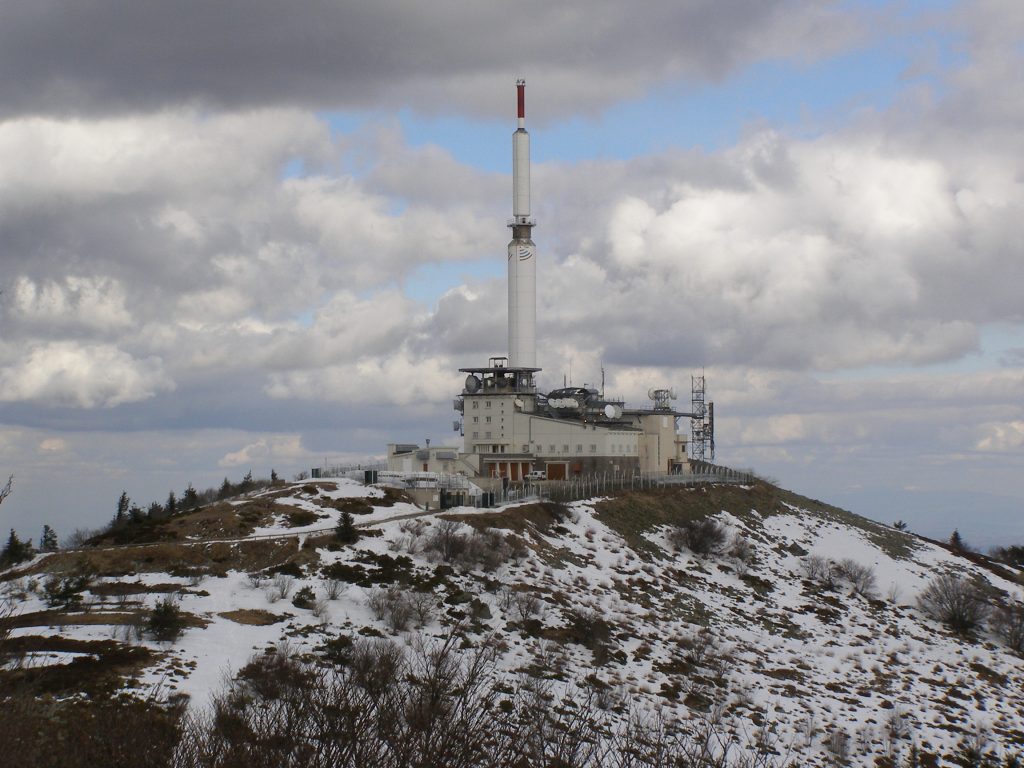
Source: Photo par Daniel Culsan sous la licence Creative Commons 3.0
La plupart des signaux proviennent de l’agglomération, mais il existe aussi des installations très puissantes comme Lyon-Mont Pilat, un émetteur important et très puissant (158 kW) qui couvre toute la région lyonnaise et d’autres départements, Fourvière améliore considérablement la réception des stations du service public dans certaines zones de Lyon, où le Mont Pilat est mal reçu (comme dans le quartier de Bellecour, dans le deuxième arrondissement de Lyon).
Aperçu des principales stations de radio locales

Source
Lyon 1ère 90.2: est basée dans la ville et diffuse de la musique Oldies (classiques) et des Hits actuels, ainsi que nombreuses informations locales concernant le Grand Lyon et quelques émissions thématiques. C’est une importante station commerciale qui fait partie du réseau Les Indes Radio, groupe créé en 1992 et composé de 125 radios locales en France.
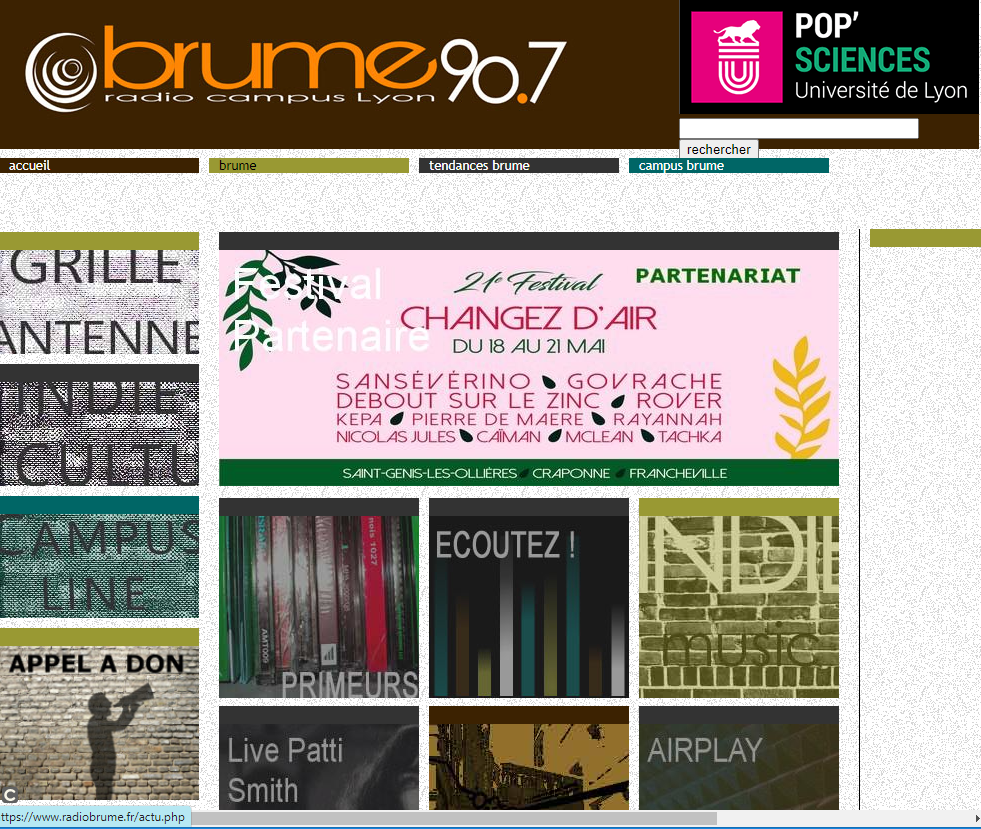
Source
Radio Brume 90.7 – C’est la Radio Campus de Lyon. Son programme est principalement musical, agrémenté de titres méconnus, non diffusés sur les radios commerciales. Musique alternative, Rock, électronique… il y en a pour tous les goûts. On y retrouve également des émissions culturelles, majoritairement à destination des étudiants de l’aire urbaine de Lyon.

Source
Radio Salam 91.1 est une station associative, dédiée à la communauté arabe musulmane de Lyon. Créée en 1991 à Lyon et en 2011 à Bourg-en-Bresse, elle diffuse des programmes en Arabe et en Français, et relaie les bulletins d’informations de Radio Monte Carlo Doualiya et RFI Radio France Internationale.
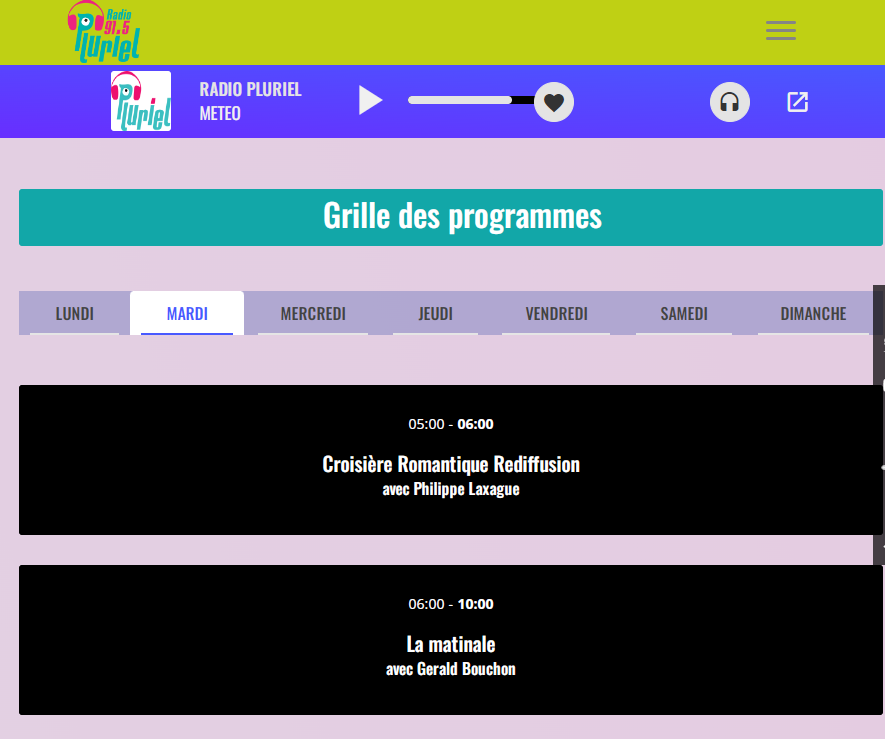
Source
Radio Pluriel 91.5 – Une station qui porte bien son slogan : “Numéro 1 sur la diversité”. Elle diffuse des émissions thématiques dédiées à des communautés multiples : Italienne, Portugaise, Berbère, Malgache… Elle relaie les bulletins d’informations de RFI Radio France Internationale, ainsi que des bulletins d’informations locales. La programmation musicale est variée : Hits actuels et Oldies (Classiques).

Source
Radio Judaïca 94.5 – Une station dédiée à la communauté Juive de Lyon. Elle propose une programmation musicale variée, agrémentée de musiques israéliennes, des émissions thématiques.

Source
Radio Espace 96.9 – La Plus Lyon des Radios ! comme l’affirme le slogan, est une station commerciale proposant une programmation musicale majoritairement axée sur les Hits actuels. Elle détient 4 fréquences FM dans le département du Rhône. Elle diffuse aussi des informations locales et départementales.

Source
Tonic Radio 98.4 – Station commerciale. Anciennement connue sous le nom de Hit & Sport, elle diffuse des retransmissions sportives et de la musique type Top 40. Tonic Radio commence à devenir une station intra-régionale grâce au DAB+. On la retrouve par exemple à Marseille et Avignon (en dehors de la région Rhône-Alpes donc).

Source
Capsao 99.3 – C’est une station associative Lyonnaise, axée sur la musique Latine depuis de nombreuses années. Elle est désormais bien présente hors région Rhône-Alpes grâce au DAB+. On peut la retrouver à Paris, à Lille et à Nice par exemple…

Source
SOL FM 100.7 – Station associative, membre de la Ferarock (Fédération de radios associatives de découvertes musicales). Elle propose une programmation musicale très variée, allant du Rock/Metal au Jazz, en passant par la musique électronique, et même parfois par les musiques du monde. En plus de sa programmation musicale, SOL FM diffuse des émissions locales, culturelles, et des émissions musicales thématiques.
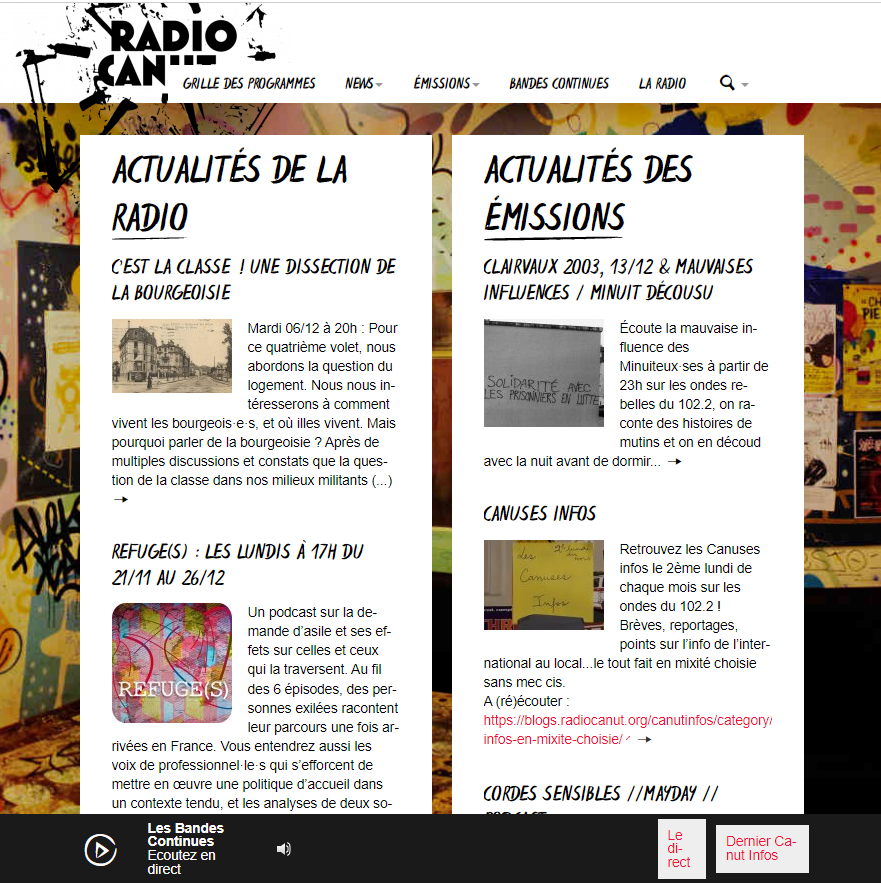
Source
Radio Canut 102.2 – Une station associative, de tendance “anarchiste/libertaire“: son slogan est “La plus rebelle des radios”. La programmation musicale est variée. Ses studios sont situés dans le quartier de la Croix-Rousse (4e arrondissement de Lyon).
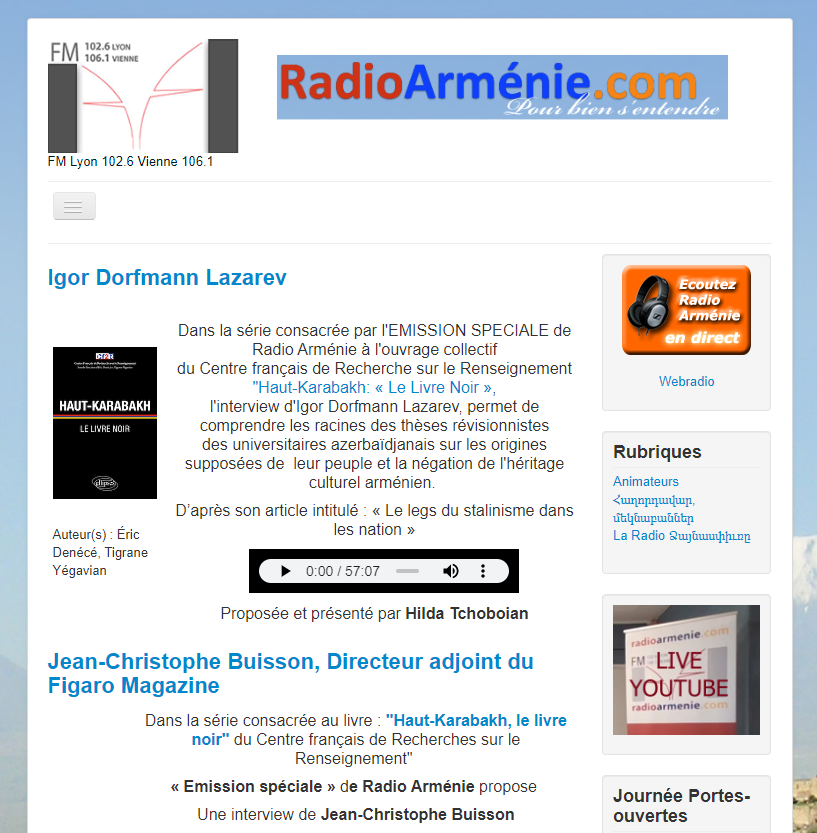
Source
Radio Arménie 102.6 – Station associative à destination de la Diaspora Arménienne. Elle est également diffusée à Vienne (Isère) sur 106.1.
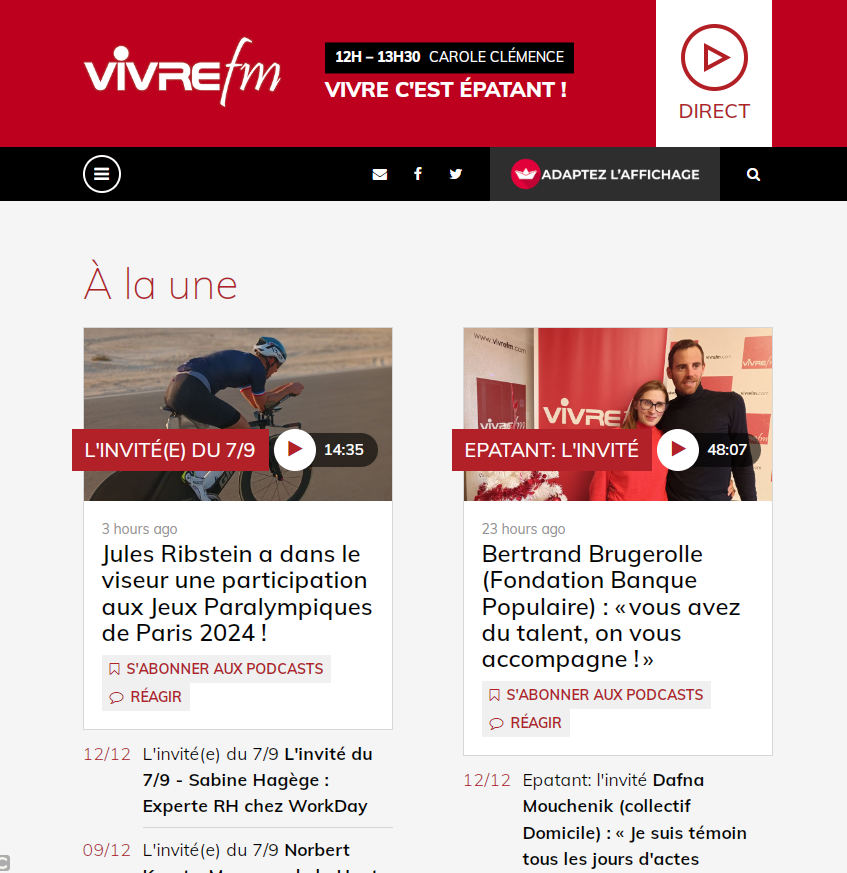
Source
Vivre FM 105.8 – C’est une station associative basée à Paris, spécialisée dans le handicap et les différences. Elle propose de nombreuses émissions dédiées à tous les types de handicap. Elle est diffusée à Lyon depuis le 15 Décembre 2021, c’est sa seule et unique diffusion FM hors de Paris.

Source
Impact FM 106.3 – Station commerciale, reprise par Radio Scoop (radio intra-régionale très connue) il y a quelques années. Sa programmation musicale est axée sur les classiques et les chansons françaises.
Il y a également des stations nationales qui sont autorisées à diffuser des émissions et des publicités locales (décrochages locaux) : Radio Nova, Nostalgie, M Radio, Chérie FM, Virgin Radio, Générations, NRJ, et RFM.
(Written by Lucas Gallone and Fabrizio Carnevalini)


